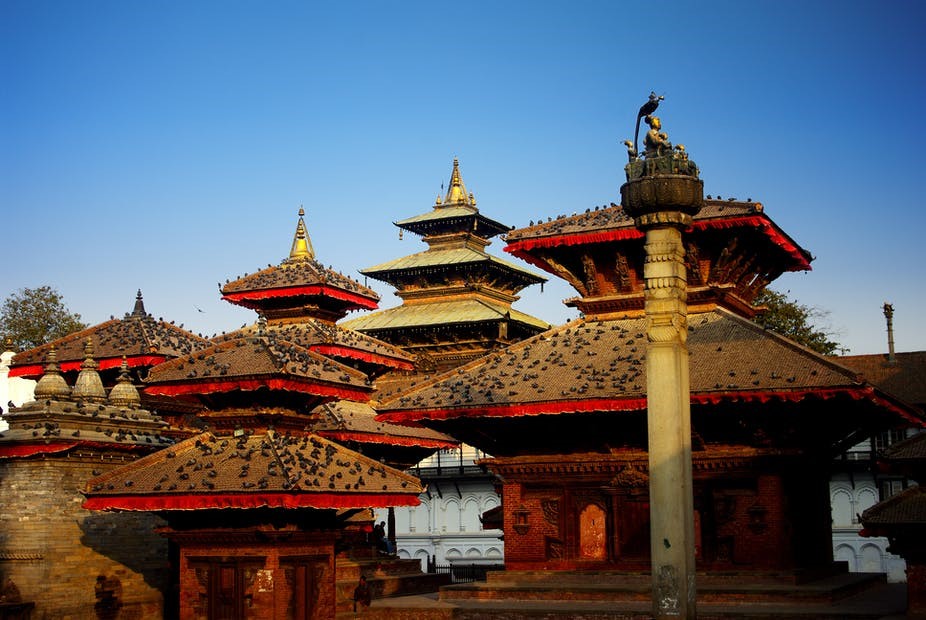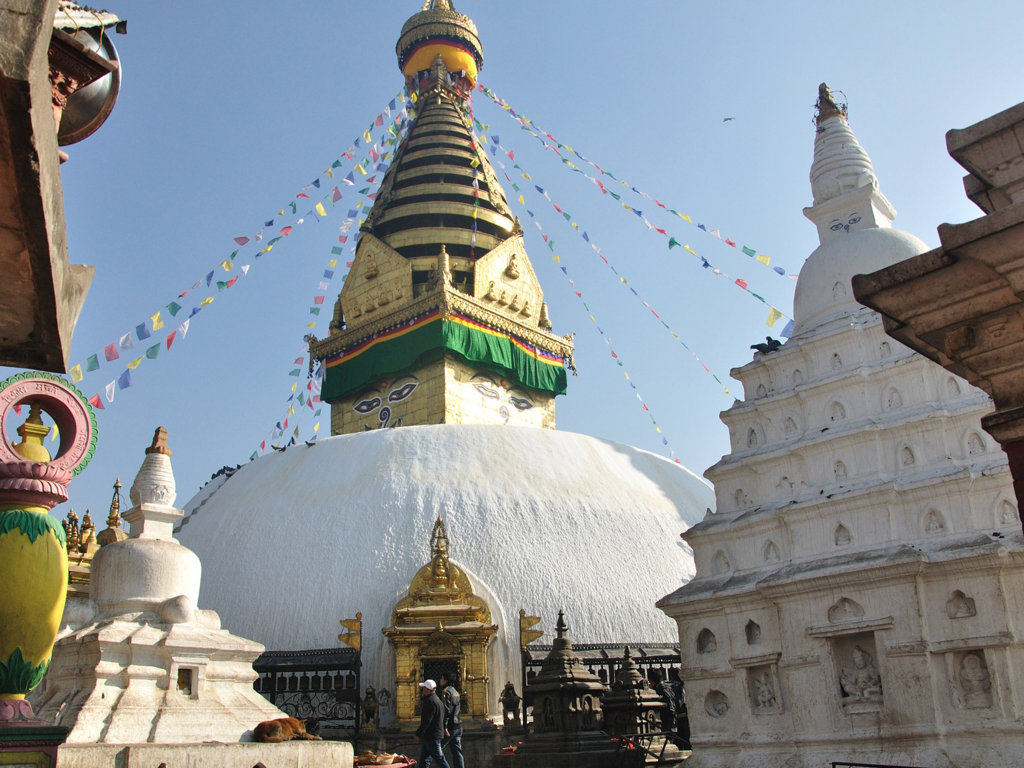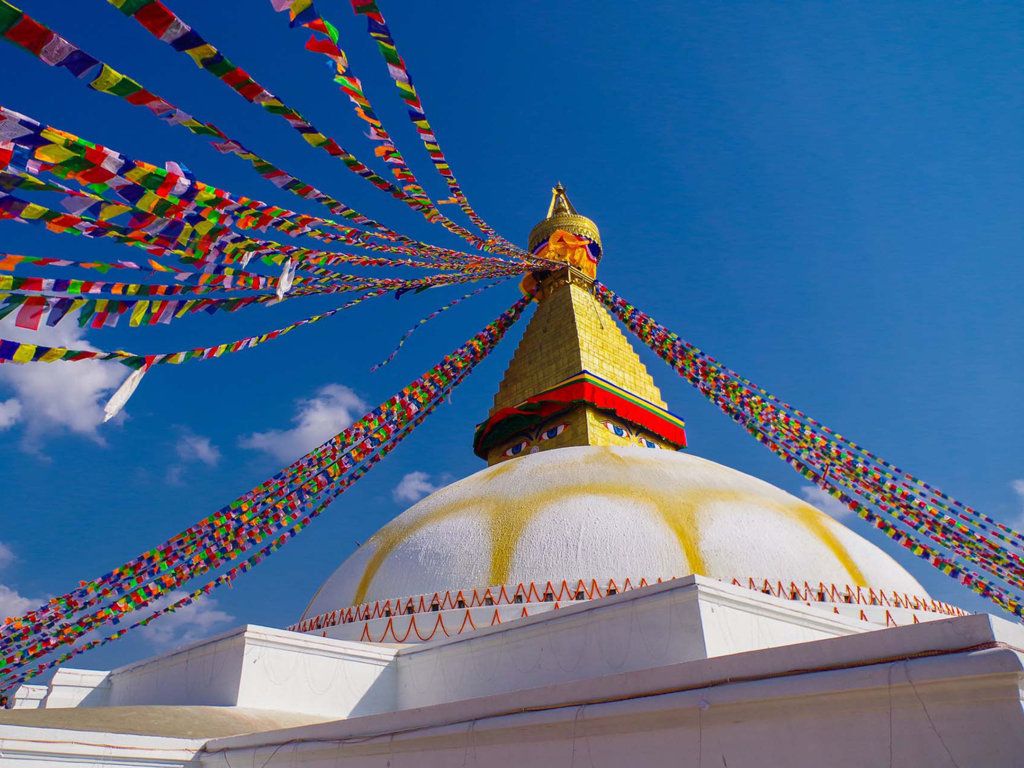Do not hesitage to give us a call. We are an expert team and we are happy to talk to you.
+977- 9801019279
contactroyalvacation@gmail.com
Halesi Heli Tour From Kathmandu offers a breathtaking journey to Halesi Mahadev, a revered temple situated in the Khotang district of eastern Nepal. The temple lies inside a beautiful and mysterious natural cave on the top of a small hill, flanked by the holy rivers Dudh Koshi and Sun Koshi, and is believed to have been in existence for 6000 years.
At Halesi Mahadev, three mysterious caves are considered to be the three eyes of Lord Shiva. The Halesi cave is 67 ft. below the surface of the land and is both a revered religious place and a favorite tourist destination. There is a custom of performing special ceremonial rites at the “Haleshwor Mahadev”.
The Halesi-Maratika Caves (also the Haleshi Mahadev temple) are located next to the village of Mahadevasthan, in the Khotang District of eastern Nepal, 3,100 ft. – 4,734 ft. above sea level. The cave and temple are about 185 km southwest of Mount Everest. The temple is a venerated pilgrimage site for Hindus, Buddhists, and Kirat. The caves are called the Halesi Mahadev Temple by Hindus who associate themselves with Mahadeva, a form of Shiva; while they are known as the Pashupatinath to Buddhists, who consider them to be the caves associated with the legend of Padmasambhava.
The Kirati Rai of the region worship Halesi as an ancestral deity of the community. The Kirat mundhum, a rich oral tradition of the Kirats, manifests that their ancestor Raechhakule (Khokchilipa) also known as Hetchhakuppa used to stay inside the Halesi cave in the remote past. For that reason, the Kirat/Rais consider Halesi as their ancestral place.
This cave is 67 feet below the surface. It is a tourist destination. Its entrance is shaped like a half-moon and faces toward the east. It has a round shape, with a diameter of 193 feet, with another, separate, cave lying beneath. The floor is 223 feet in circumference. The location of this cave lies between the holy rivers Dudh Koshi and Sun Koshi.

The caves of Halesi-Maratika are referred to in Himalayan literature as far back as the 12th century. In ancient times, the ancestors of the Kirati Rai, Khokchilippa/ Raechakule are mentioned in the legend of living in the Halesi cave.
The Halesi Mahadev Heli tour to the holy Halesi Mahadev temple is one of the famous religious pilgrimage tours. The holy destination is a sacred place for Hindus as well as Buddhist pilgrims. The helicopter ride can be concluded within a few hours from Kathmandu. Because of the poor road transportation facility to the temple, it is highly recommended by helicopter tour.
Royal Vacation Helicopter Tours are followed by high safety rules and regulations. Safety is our utmost priority and we make sure that our guests are well-informed about the rules of the helicopter we use for this tour. Below are some safety measures and tips before the Gosainkunda Helicopter Tour which should be followed with discipline at all costs.
The Halesi Helicopter Tour is a relatively short flight but it is important to be prepared and pack well. UV rays are intense at this altitude and it is necessary to pack accordingly. Beware not to pack too much since it will make it harder to carry around and increase the weight. Here is what we suggest you pack, follow the packing list for the Halesi Helicopter Tour for a smooth tour experience:
Halesi lies at 3,100 ft. from the sea level. At this kind of altitude, the weather change is frequent. Most of the time, it’s windy and dry in this region. However, it can change quickly. So, it is really important to pick the right time which is favorable for a helicopter flight. While picking our time for the Halesi flight, we are looking to avoid foggy and rainy weather as either will distort the views making the helicopter flight worthless.
The best time for Halesi falls during the Autumn and Spring season. As per our experience, most travelers prefer Autumn. The days are warm and sunny with dry weather which makes it easy to tour around the Cave. The landscapes are at their best during this time accompanied by the crisp views of the Himalayan ranges. Below we take a detailed look into each season, we suggest you go through them before you pick the ideal one for you to visit Halesi.
Let’s take a deeper look at the weather and the best time for the Halesi Heli Tour in Nepal.
The Autumn season is the best time for the Halesi Helicopter Tour. However, be informed that this season is not the only ideal season for Halesi Helicopters. If you have missed Autumn, you can still pick a good time for the tour since it only requires 2 hours at max.
Autumn extends from September to mid-December. During this time, the sky becomes clear and the views of the Himalayas come to life. The weather is stable and the temperature is highly favorable. Since most travelers prefer Autumn, you can expect some traffic while touring Halesi.
The Halesi Helicopter Tour can also be enjoyed during the spring (March to May). The spring is considered the second-best season for the Halesi Heli Tour. The temperature is moderate ranging from 20°C to 30°C. During this season, the scenery is exceptional and along the way, you will encounter dense forests blooming with rhododendrons.
There is little to no chance of rain which makes it even more exciting to visit Halesi during the spring. However, there is always a slight chance and you can never be too sure. So it is always better to prepare.
The monsoon season falls from June to August. During the season, the Halesi region experiences a warm summer. The daytime averages 25°C in lower altitudes but it drops as you start gaining altitude. There is frequent rainfall that makes the surroundings wet and slippery. Trekking is not a good idea during monsoon. The weather can get foggy which obstructs the views.
During monsoon, local farmers are highly engaged in the field. Therefore, if you happen to fly during monsoon, you will experience the fascinating terrace farming from the helicopter. To see hundreds of farmers working simultaneously to plant is indeed a wondrous experience.
The Halesi region is fairly cold during the winter. The temperature ranges from 15°C to 20°C during the daytime and drops significantly during the night. However, we have to admit that the views look lovely. The weather conditions could get uncomfortable if you are not so used to cold temperatures.
So, if you plan on traveling to Halesi during the winter season, make sure you are well-prepared and well-packed. Our travel experts will tell you exactly what you need to have an amazing helicopter tour to Halesi even in winter. They will not only fill you up on some crucial information but also help you prepare a custom itinerary for the tour.
John F.K. International Airport (Google Map)
3 Hours Before Flight Time
Upon your arrival in Kathmandu, one of the Royal Vacation representatives will receive you at the airport and will transfer you to the hotel. Rest of the day at leisure or explore on your own.
Overnight: Hotel Dwarika in Kathmandu
After breakfast at the hotel, we will begin on a full-day sightseeing tour of Kathmandu Valley’s main attractions:
Kathmandu Durbar Square:
Kathmandu’s Durbar Square was the traditional heart of the old town, where kings were crowned and ruled. Despite damage from the 2015 earthquake, it remains a spectacular legacy of traditional architecture. Designated as a UNESCO World Heritage Site in 1979, the square includes Basantapur Square, the main Durbar Square, and the section containing Hanuman Dhoka and several temples.

Swayambhunath:
Swayambhunath Stupa is a key architectural marvel in Kathmandu. Rising through a whitewashed dome to a gilded spire, it features the iconic Buddha eyes. The stupa’s structure symbolizes the earth, nirvana, and the unity of Buddha’s wisdom. Pilgrims spin prayer wheels around the base while prayer flags flutter above. The Monkey Temple offers a unique blend of Buddhist and Hindu iconography and is an excellent spot to watch the sunset over Kathmandu.

Boudhanath:
Boudhanath Stupa, built after AD 600, symbolizes grace and purity. The stupa’s structure, from its whitewashed dome to its gilded tower, represents the Buddha’s path to enlightenment. Legend says it contains relics of past Buddhas. The stupa features 108 small images of Dhyani Buddha Amitabha and 147 prayer wheels. It is surrounded by a lively atmosphere of pilgrims performing koras (circumambulations).

Pashupatinath:
Nepal’s most important Hindu temple, located on the banks of the holy Bagmati River, is dedicated to Shiva as Pashupati, the Lord of Animals. Despite its proximity to urban areas and the 2015 earthquake, it remains a significant spiritual site.

After visiting Pashupatinath, we will return to the hotel for a welcome dinner.
Overnight: Hotel Dwarika in Kathmandu.
Meals included: Breakfast and dinner
Bhaktapur:
Bhaktapur is one of the old cities in the Kathmandu Valley. The 2015 earthquake caused damage and loss, but many temples are still there. Tourism is important for the community.

Locals call it Bhadgaon or Khwopa, which means City of Devotees. Bhaktapur has three main squares with tall temples and beautiful architecture. You can see artisans at work and locals doing daily activities like collecting water and playing cards. Visitors pay a fee to help fix and maintain the temples.
Patan:
Patan was once its own city but is now close to Kathmandu, separated by the Bagmati River. It is also called Lalitpur (City of Beauty) or Yala. Patan’s Durbar Square has the best temples and palaces in Nepal, even after the 2015 earthquake. There are many shops and restaurants, and fair-trade shops sell handmade crafts.

The royal palace of Patan faces Durbar Square, showing Newari architecture. Many temples were built during the Malla period, especially under King Siddhinarsingh Malla. The palace has a museum with religious art, explaining the valley’s art and culture.
Today, we will also visit the Golden Temple, Mul Chowk, Krishna Mandir, Sundari Chowk, Royal Palace, Golden Gate, and Maha Boudha Temple in Patan. After the tour, we will return to our hotel in Kathmandu.
Overnight: Hotel Dwarika in Kathmandu.
Meals included: Breakfast, Lunch, and Dinner
One of our team members will pick you up from your hotel and transfer you to the domestic terminal at Tribhuvan International Airport. Before boarding the helicopter for the Halesi tour, the captain will brief you on important guidelines and answer any questions. Follow the pilot’s instructions at all times.
The helicopter takes off from the airport, offering an aerial view of Kathmandu Valley. We head east towards the Everest region, flying over the Himalayas with stunning views of verdant hills. Upon landing at Halesi, we will explore the Halesi Mahadev Cave before flying back to Kathmandu.
The Halesi Helicopter Tour ends as we return to the domestic terminal at Tribhuvan International Airport. We bid farewell to the beautiful Khotang district and Halesi Mahadev Cave. The entire tour lasts about 2 hours, including a 40-minute flight each way and 30 minutes on the ground at Halesi Cave.
Phase 01:
The tour starts from Tribhuvan International Airport. After takeoff, we get a bird’s-eye view of Kathmandu city and head east. We see incredible landscapes, including the tallest Lord Shiva statue at Sanga. After 40 minutes, we reach Halesi Cave.
Phase 02:
At Halesi, we experience a refreshing breeze and the beautiful surroundings of the Chure and Mahabharat mountains. The weather varies by season, but it’s always a picturesque environment. After a delightful breakfast at a local restaurant, we prepare to return to Kathmandu.
Phase 03:
The return flight to Kathmandu offers one last chance to enjoy the views. After 40 minutes, we land back at the airport, ending the tour.
Overnight: Hotel Dwarika in Kathmandu.
Meals included: Breakfast.
Approximately 3 hours before departure of your flight, you will be transferred to Kathmandu International Airport where we guide you to the check-in hall. From here we hope you had an amazing journey through our country, Nepal. And we hope to see you again.
Meals included: Breakfast.
Note: This itinerary is specially created for you. This itinerary can be adjusted in all aspects to meet your specific requirements. Please let us know what suits you best and we will be very pleased to provide you with a complete tailor-made holiday package.
Note: Please note: Tipping (guides/driver) is not included in the price. Guests can always decide if they would like to tip for good services to guides, porters, and drivers at the end of the trip. However, in Nepal, it is a custom of good faith to tip guides/drivers when they have provided a good service.
